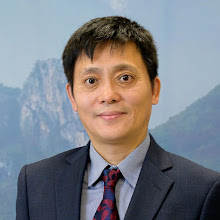Tiejun Tang
 Dance injuries
are very common in professional dancers. A recent systematic review study showed
the period prevalence of musculoskeletal injuries in ballet dancers is 280%. The most
prevalent musculoskeletal disorders included: hamstring strain (51%), ankle tendinopathy
(19%) and general lower back pain (14%)[1].Typical treatments for
dance injuries are usually physiotherapy, massage and pain killers, with some dancers
trying traditional acupuncture. Although these therapies can temporarily
release pain to varying degrees,the effect comes slowly and tends to be of
limited duration. Dance injuries have a
considerable impact upon the lives and careers of the dancers impairing their
training and performance and potentially resulting in long term chronic pain or
even disablement.
Dance injuries
are very common in professional dancers. A recent systematic review study showed
the period prevalence of musculoskeletal injuries in ballet dancers is 280%. The most
prevalent musculoskeletal disorders included: hamstring strain (51%), ankle tendinopathy
(19%) and general lower back pain (14%)[1].Typical treatments for
dance injuries are usually physiotherapy, massage and pain killers, with some dancers
trying traditional acupuncture. Although these therapies can temporarily
release pain to varying degrees,the effect comes slowly and tends to be of
limited duration. Dance injuries have a
considerable impact upon the lives and careers of the dancers impairing their
training and performance and potentially resulting in long term chronic pain or
even disablement.
As an acupuncturist I used to work in the pain clinic at Whittington hospital for many years, where we used acupuncture to help a lot of patients who suffer from a broad range of pain types. Many of the patients had been taking pain killers for a long time with limited effect.We applied acupuncture in every patient, plus cupping in some severe cases. Most of patients saw note worthy improvement after 5-10 sessions. In some cases, very significant improvement was noted.
Dance injuries may not have been common in ancient China, but injuries
arising from martial arts and acrobatics training were. The ancient doctors believing
that life energy (Qi) stagnation and blood stasis were the main pathological
changes arising from trauma injuries, this caused pain and that acupuncture
stimulated the energy flow and consequently relieved the pain. The treatment
outcomes remain valid today, but we now have a new technique called Fu's SubcutaneousNeedle (FSN)[2] which
has an almost magical effect without the need to fully penetrate the skin. It
is my experience that this relatively new acupuncture technique can obtain immediate
pain release effects. This treatment differs from traditional acupuncture in
that it applies a special patent needle to the sub-cutaneous layer, the
innermost layer of skin, where there are no nerves and therefore minimal
sensation of pinprick for the patient. After about 30-40 minutes about 80% of
patients feel the pain much better or totally disappeared right after the
treatment finish.
As well as releasing the local pain of dance injury, acupuncture also can relieve anxiety, benefit sleep and boost energy levels in dancers. A good health condition is a guarantee of good dance. Acupuncture can help you to become a great dancer!
Reference
- Smith TO. Prevalence and profile of musculoskeletal injuries in ballet dancers: A systematic review and meta-analysis.Phys Ther Sport. 2016;19:50-6.
- Tiejun Tang. FSN – A Magical Acupuncture for Pain Release. http://chinesemedicinesalon.blogspot.co.uk/2016/09/fsn-magical-acupuncture-for-pain-release.html
